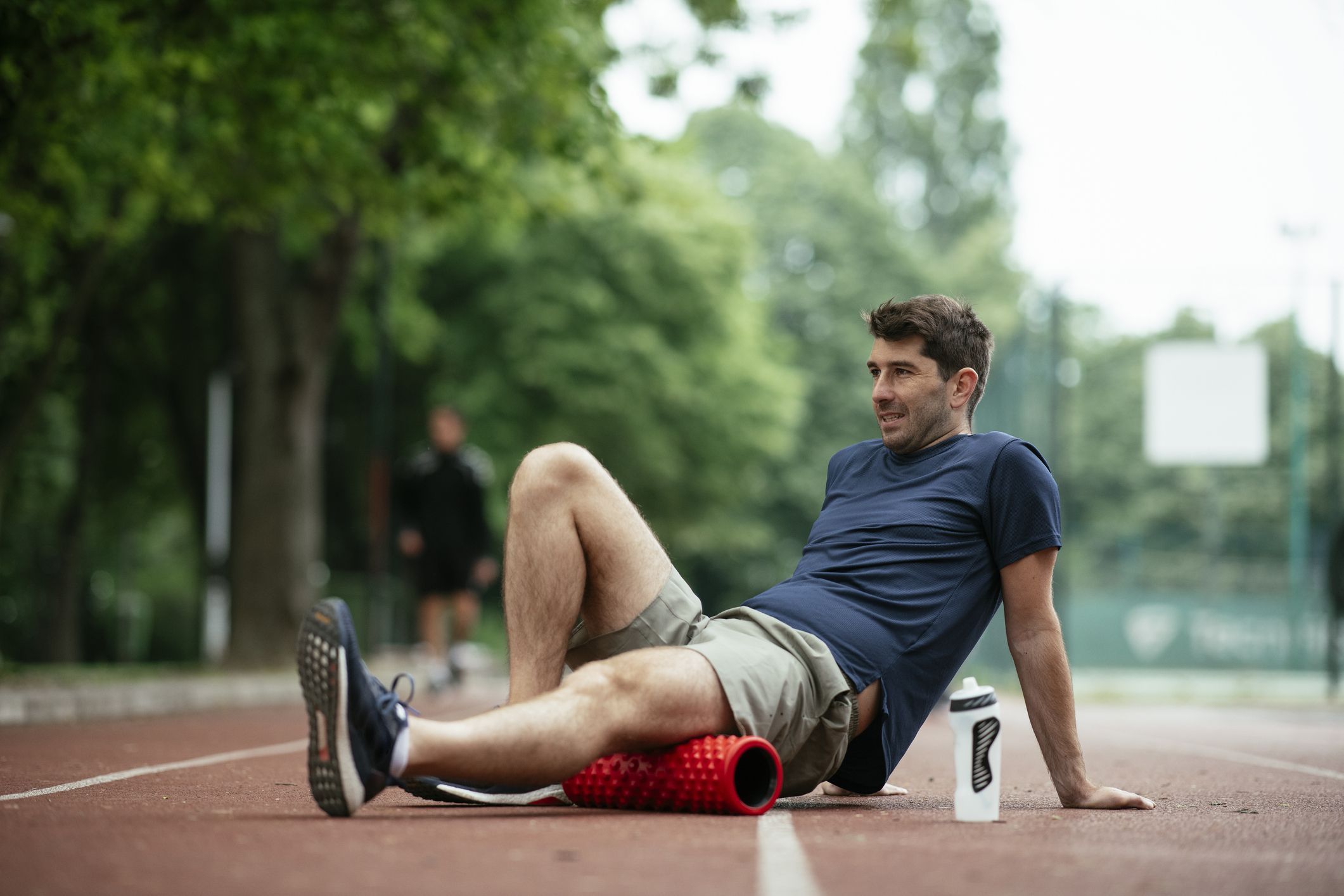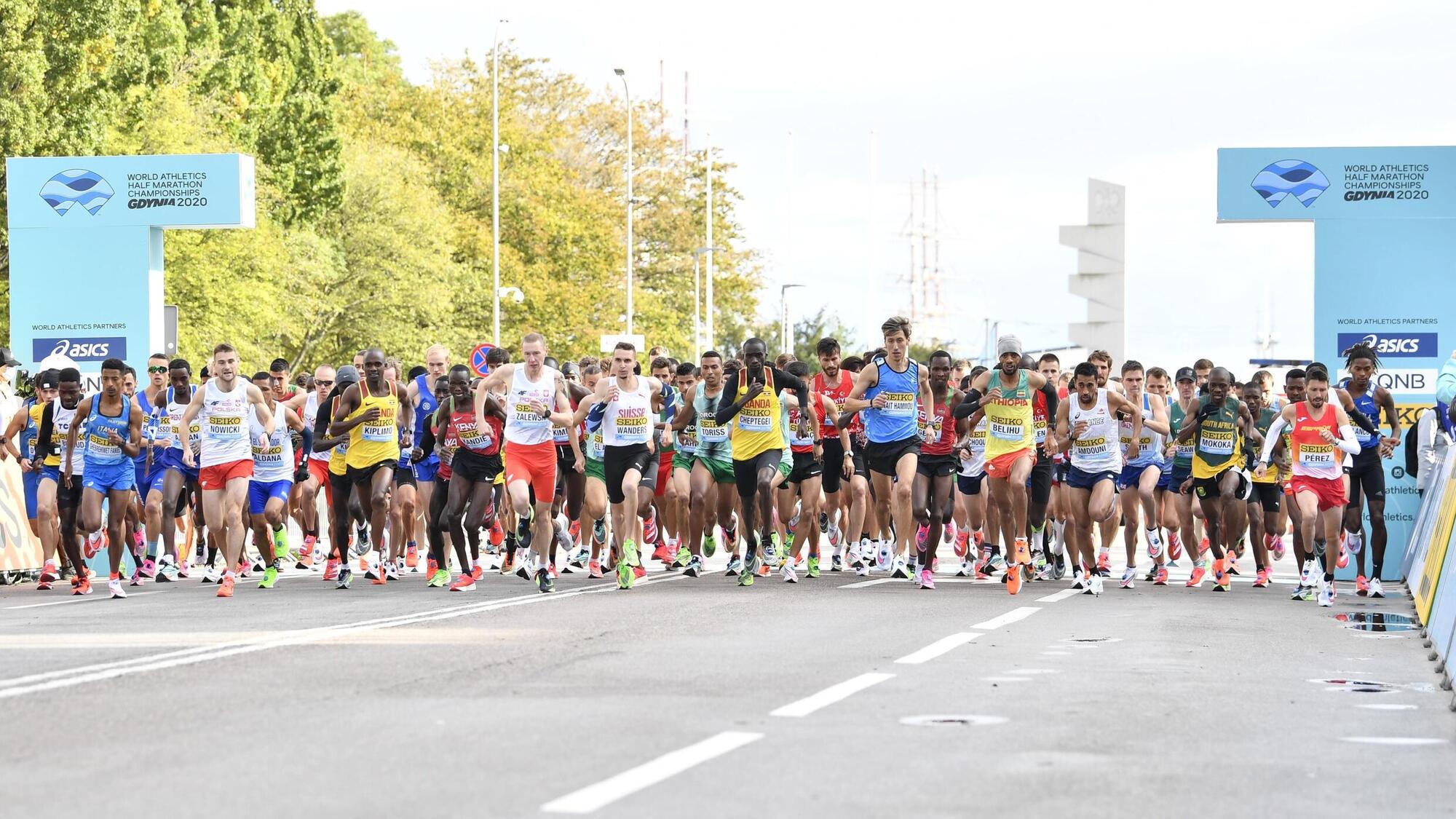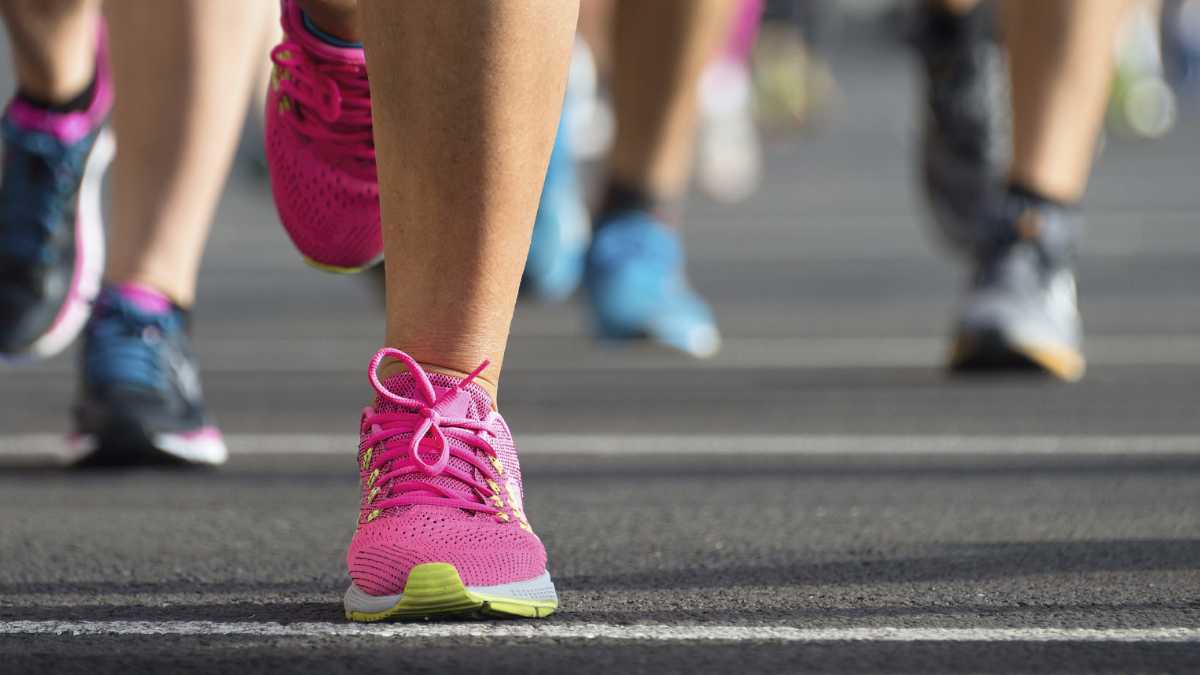Home>Misc>Featured>How Many Days Should You Rest Before A Half Marathon


Featured
How Many Days Should You Rest Before A Half Marathon
Modified: January 22, 2024
Discover the optimal rest period before your upcoming half marathon. Uncover the featured insights on how many days you should rest for a successful race.
Introduction
Preparing for a half marathon requires dedication, discipline, and a well-executed training plan. While it’s important to put in the miles and push your body to its limits, equally crucial is the time you spend resting and recovering. Rest is often overlooked in training programs, but it plays a vital role in optimizing performance and minimizing the risk of injury.
In this article, we will explore the importance of rest days before a half marathon, the factors to consider in determining the number of rest days needed, and the recommended rest periods for effective training. We will also discuss the significance of active recovery and highlight common mistakes that athletes make when it comes to resting before a race.
Resting before a half marathon should not be seen as a sign of weakness or lack of commitment. On the contrary, it is a key component of a successful training plan. Incorporating appropriate rest periods allows your body to adapt and recover from the rigorous training sessions, enabling you to perform at your best on race day.
Benefits of Resting Before a Half Marathon
Resting before a half marathon offers a multitude of benefits that can significantly impact your performance and overall well-being. Here are some key advantages:
- Recovery and Repair: Rest days allow your muscles, tendons, and ligaments to repair and rebuild. Running puts stress on these structures, and giving them time to recover helps prevent overuse injuries and improves overall muscular strength.
- Injury Prevention: Overtraining can lead to a higher risk of injuries, such as stress fractures, shin splints, and muscle strains. Rest days provide an opportunity for your body to heal and reduce the likelihood of these injuries occurring.
- Mental Refreshment: Training for a half marathon can be mentally challenging. Rest days offer a chance to recharge both physically and mentally. It allows you to maintain a positive mindset, stay motivated, and avoid burnout.
- Performance Enhancement: Resting allows your body to adapt to the training stimulus and improve performance. By allowing adequate recovery time, your muscles can store glycogen more efficiently, leading to increased energy levels and endurance during the race.
- Immune System Boost: Intense training can temporarily suppress your immune system, making you more susceptible to illness. Rest days help strengthen your immune system, reducing the risk of getting sick and disrupting your training schedule.
By incorporating rest days into your training plan, you can maximize the benefits of your workouts and ensure that you arrive at the starting line feeling fresh, strong, and ready to tackle the challenges of a half marathon.
Factors to Consider in Determining Rest Days
When determining the number of rest days needed before a half marathon, it’s important to consider several factors that can affect your body’s ability to recover and adapt. These factors include:
- Training Intensity: The intensity of your training plays a significant role in determining the number of rest days you need. Higher intensity workouts, such as speed or hill training, place more stress on your muscles and may require additional recovery time.
- Training Volume: The amount of mileage you accumulate during your training program affects the amount of rest you need. Higher weekly mileage or long runs necessitate more rest days to allow your body to recover.
- Experience Level: Your experience level as a runner can impact how quickly your body recovers. Novice runners may need more rest days compared to seasoned athletes who have built a solid base and have adapted to the demands of running.
- Age and Recovery Ability: Age can affect your body’s ability to recover. As you age, it may take longer to bounce back from intense workouts. Listening to your body and allowing for adequate rest becomes even more crucial.
- Individual Differences: Every runner is unique, and different individuals may require varying amounts of rest days based on their body’s response to training. Factors such as genetics, nutrition, sleep quality, and overall stress levels can influence how quickly you recover.
It’s essential to listen to your body and be flexible when determining the number of rest days you incorporate into your training plan. Pay attention to any signs of fatigue, persistent soreness, or decreased performance, as these may indicate the need for additional rest.
Remember, finding the right balance between training and rest is crucial for achieving optimal performance and avoiding burnout or injury.
Recommended Rest Periods for Half Marathon Training
When it comes to rest periods during half marathon training, there is no one-size-fits-all approach. The recommended rest periods can vary depending on several factors, including your fitness level, training intensity, and overall recovery ability. However, here are some general guidelines to consider:
- Weekly Rest Day: It is generally recommended to have at least one complete rest day per week. This day allows your body to fully recover from the cumulative stress of training and promotes overall restorative and healing processes.
- Easy/Active Recovery Days: In addition to a weekly rest day, incorporating easy or active recovery days throughout your training plan is beneficial. These days involve low-intensity activities such as gentle jogging, swimming, or cycling, which help promote blood flow, flush out metabolic waste, and aid in muscle repair.
- Decrease Training Volume: During your taper period, typically the last two to three weeks leading up to the race, it’s recommended to decrease your training volume. This reduction in mileage allows your body to fully recover and store glycogen, ensuring you are fresh and ready for race day.
- Listen to Your Body: While the above recommendations serve as a general guideline, it’s important to listen to your body’s signals. If you feel excessively fatigued, experience persistent soreness, or notice a decline in performance, it may be an indication that you need additional rest. Be flexible and adjust your rest periods accordingly.
Remember that rest days are not a time to be sedentary but rather an opportunity to engage in low-impact activities, stretch, foam roll, and prioritize proper nutrition and sleep. The combination of rest and active recovery will help your body adapt to the training stimulus, improve muscular strength, and optimize performance on race day.
Consulting with a coach or a qualified professional can also assist in tailoring your rest periods and training plan to your specific needs and goals.
Importance of Active Recovery
Active recovery is a crucial component of a well-rounded training program, especially when it comes to preparing for a half marathon. It involves engaging in low-intensity activities on your rest days or during easy recovery days. While complete rest is beneficial, incorporating active recovery can provide additional advantages:
- Blood Flow and Circulation: Engaging in light exercise promotes blood flow and circulation to the muscles, aiding in the removal of metabolic waste products and promoting overall recovery.
- Reduced Muscle Stiffness and Soreness: Active recovery helps reduce muscle stiffness and soreness by gently working the muscles and joints. It can alleviate post-workout tightness, improving overall flexibility and range of motion.
- Psychological Benefits: Active recovery can have a positive impact on your mental well-being. It provides a break from intense training, reduces stress levels, and can be a great opportunity for mindfulness and relaxation.
- Maintaining Fitness: During rest days or periods of decreased training volume, active recovery helps maintain cardiovascular fitness and prevents detraining effects. It allows you to stay active while still giving your body the rest it needs.
- Injury Prevention: Engaging in low-impact activities during active recovery can help maintain joint stability, improve muscular balance, and reduce the risk of injuries. It allows your body to repair itself without placing excessive stress on already fatigued muscles.
- Performance Enhancement: Active recovery promotes the flow of nutrients to the muscles, aiding in the repair and synthesis of proteins. This can lead to improved muscle strength and endurance, ultimately enhancing your performance on race day.
Incorporating active recovery into your training plan can have numerous benefits for both the physical and mental aspects of your half marathon preparation. It is an effective tool in optimizing recovery, preventing injuries, and maintaining a healthy balance between training and resting.
Remember to listen to your body and choose activities that feel comfortable and enjoyable. It can be as simple as going for a leisurely walk, practicing yoga, or engaging in low-impact cross-training activities. The key is to keep moving and allowing your body to recover while still maintaining overall fitness.
Common Mistakes in Resting Before a Half Marathon
When it comes to resting before a half marathon, athletes often make certain mistakes that can hinder their performance or increase the risk of injury. By being aware of these common pitfalls, you can avoid them and ensure you’re maximizing the benefits of your rest days. Here are some common mistakes to watch out for:
- Skipping Rest Days: Some runners have the tendency to push through fatigue and skip rest days, believing that more training will lead to better results. However, this can lead to overtraining, increased risk of injury, and overall fatigue. It is crucial to adhere to your training plan and allow for adequate rest.
- Not Adjusting for Recovery: Failing to adjust training intensity and volume based on your body’s recovery can be a critical mistake. If you’re feeling excessively fatigued or experiencing persistent soreness, it’s important to modify your training or schedule additional rest days to allow for proper recovery.
- Neglecting Active Recovery: While rest days are important, neglecting active recovery can hinder your progress. Engaging in low-intensity activities such as stretching, foam rolling, or gentle cross-training exercises can aid in recovery, reduce muscle stiffness, and promote overall wellbeing.
- Not Prioritizing Sleep: Sleep is an essential component of recovery. Not getting adequate sleep can negatively impact your body’s ability to repair and rebuild, as well as lead to decreased energy levels and impaired performance. Make sure to prioritize quality sleep to enhance your recovery process.
- Neglecting Nutrition: Proper nutrition is key during rest days. It’s important to fuel your body with nutritious foods to support muscle repair, replenish glycogen stores, and optimize recovery. Neglecting nutrition can lead to decreased performance and delay the recovery process.
- Getting Sidelined by Inactivity: While rest is important, excessive inactivity can lead to muscle imbalances, loss of flexibility, and reduced cardiovascular fitness. Stay active on rest days through low-impact activities to maintain overall fitness and prevent detraining effects.
Avoiding these common mistakes and taking a balanced approach to rest and recovery will help you arrive at the starting line of your half marathon in optimal condition. Remember that rest is an essential part of the training process and should be treated with the same level of importance as your workouts.
Conclusion
Rest days are often viewed as a passive component of training, but they are vital to success in a half marathon. Proper rest and recovery allow your body to repair, rebuild, and adapt to the physical demands of training. By incorporating rest days and active recovery into your training plan, you can experience numerous benefits such as injury prevention, enhanced performance, reduced muscle soreness, and improved mental well-being.
When determining the number of rest days needed, consider factors such as training intensity, volume, experience level, age, and individual differences. Listen to your body’s signals, adjust your rest periods accordingly, and be flexible with your training plan. Remember, finding the right balance between training and rest is essential to optimize performance and avoid burnout or injury.
Avoid common mistakes such as skipping rest days, neglecting active recovery, not prioritizing sleep and nutrition, and excessive inactivity. Make sure you provide your body with the right amount of rest and engage in low-impact activities on rest days to support your overall fitness and recovery process.
Preparing for a half marathon is a journey that requires a combination of hard work, dedication, and proper rest. By recognizing the importance of rest and recovery, you will be better equipped to perform at your best on race day and enjoy a successful and fulfilling half marathon experience.









